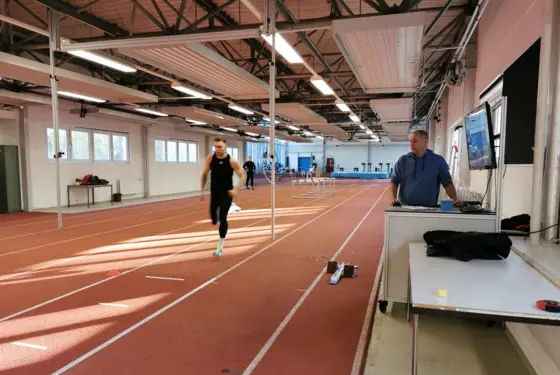If performed simultaneously with both legs, the counter movement jump can be used to immediately determine whether an asymmetry exists and if further clarification through additional tests is possible or necessary. After performing the squat test module, it is possible to more accurately determine the cause of the asymmetry. The squat test module is a symmetry test in which the ground reaction forces are measured in various positions: from upright standing, a half-squat and a deep squat.
This test can be used to determine the causes of the asymmetry, including:
- A functional difference in the leg lengths
- Muscular imbalances
- Postural abnormalities
- Problems in the lower back area
- Hip immobility
- Chronic pain
- Injuries
How do modern performance diagnostics function using a force measurement plate system?
The sensors integrated in the force plates record standardized, highly dynamic movement sequences. Analysis software processes the data using predefined test modules for standardized tests for motion paths in the areas of force, power and balance. The results are made available in a clearly arranged graphical representation on a monitor.


